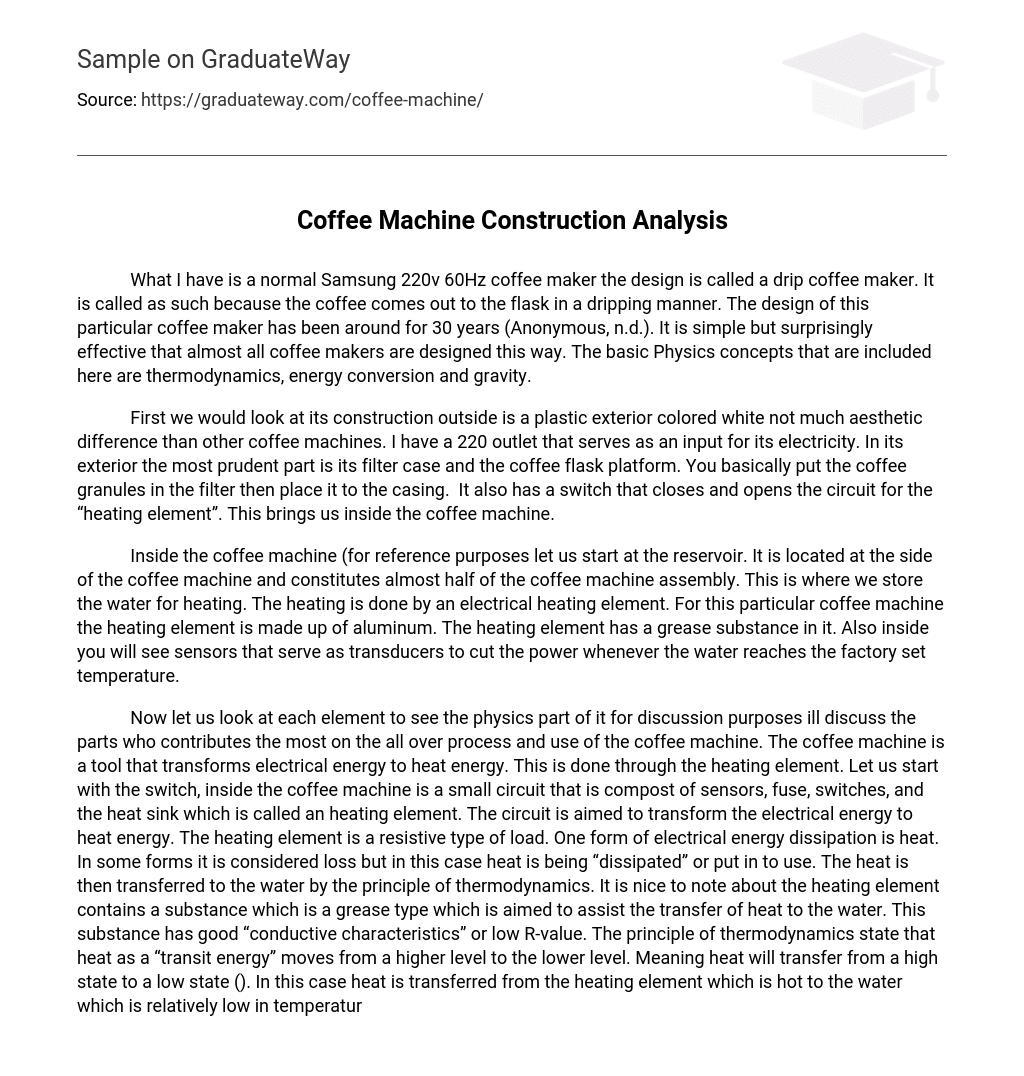What I have is a normal Samsung 220v 60Hz coffee maker the design is called a drip coffee maker. It is called as such because the coffee comes out to the flask in a dripping manner. The design of this particular coffee maker has been around for 30 years (Anonymous, n.d.). It is simple but surprisingly effective that almost all coffee makers are designed this way. The basic Physics concepts that are included here are thermodynamics, energy conversion and gravity.
First we would look at its construction outside is a plastic exterior colored white not much aesthetic difference than other coffee machines. I have a 220 outlet that serves as an input for its electricity. In its exterior the most prudent part is its filter case and the coffee flask platform. You basically put the coffee granules in the filter then place it to the casing. It also has a switch that closes and opens the circuit for the “heating element”. This brings us inside the coffee machine.
Inside the coffee machine (for reference purposes let us start at the reservoir. It is located at the side of the coffee machine and constitutes almost half of the coffee machine assembly. This is where we store the water for heating. The heating is done by an electrical heating element. For this particular coffee machine the heating element is made up of aluminum. The heating element has a grease substance in it. Also inside you will see sensors that serve as transducers to cut the power whenever the water reaches the factory set temperature.
Now let us look at each element to see the physics part of it for discussion purposes ill discuss the parts who contributes the most on the all over process and use of the coffee machine. The coffee machine is a tool that transforms electrical energy to heat energy. This is done through the heating element. Let us start with the switch, inside the coffee machine is a small circuit that is compost of sensors, fuse, switches, and the heat sink which is called an heating element. The circuit is aimed to transform the electrical energy to heat energy. The heating element is a resistive type of load. One form of electrical energy dissipation is heat. In some forms it is considered loss but in this case heat is being “dissipated” or put in to use. The heat is then transferred to the water by the principle of thermodynamics. It is nice to note about the heating element contains a substance which is a grease type which is aimed to assist the transfer of heat to the water. This substance has good “conductive characteristics” or low R-value. The principle of thermodynamics state that heat as a “transit energy” moves from a higher level to the lower level. Meaning heat will transfer from a high state to a low state (). In this case heat is transferred from the heating element which is hot to the water which is relatively low in temperature.
Those are the basic Principles of physics that is present in the operation of a coffee machine. To enumerate; one is energy conversion and two heat transfer.
Reference:
Anonymous. (n.d.) the heating element of a coffee maker.http://home.howstuffworks.com/coffee-maker2.htm
Anonymous (n.d.). The Laws of thermodynamics. http://en.wikipedia.org/wiki/Thermodynamics





